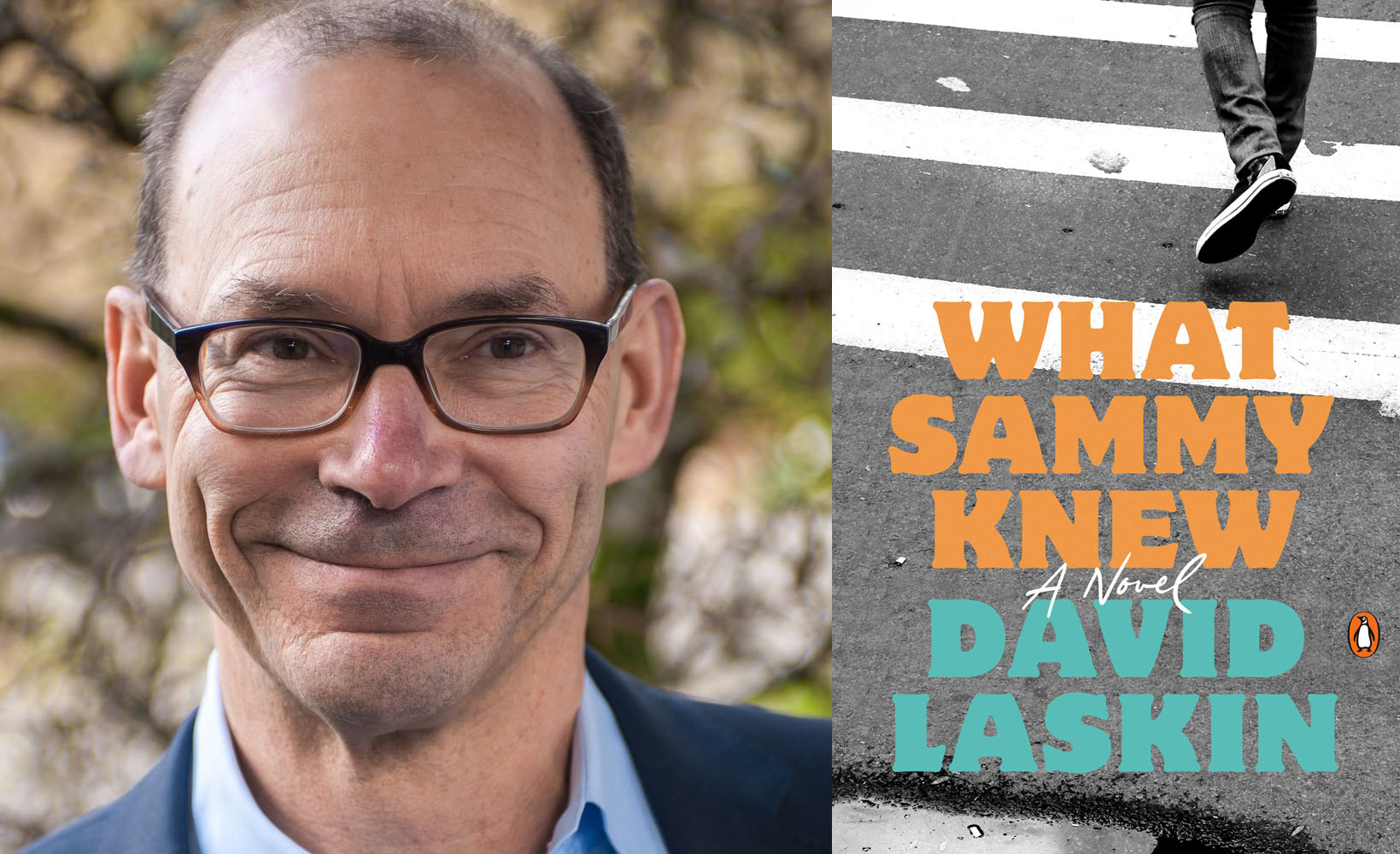
Like many other readers, I felt chills while reading David Laskin’s new novel, “What Sammy Knew” (March 2021), a captivating coming-of-age story about a Jewish teenager faced with the racial unrest of the 1960s and 1970s; however, some of my goosebumps arose from more personal reasons. I grew up in the same privileged neighborhood as Laskin and his freckled protagonist, Sam Stein. We attended the same public high school on Long Island. We experienced the same hormone-fueled loathing of suburbia and our “bedroom community stuffed with rag-trade impresarios, pill-popping trophy wives, and their brilliant beautiful Ivy League-or-bust offspring.”
I suppose that makes me and Laskin such “offspring.”
Laskin originally began writing “What Sammy Knew” as a nonfiction book like his past works, which include “The Children’s Blizzard” and “The Long Way Home”. The award-winning author set out to write a memoir about his childhood relationship with Ethel Beane Foreman, his family’s live-in domestic worker. After writing “The Family: A Journey into the Heart of the Twentieth Century,” Laskin became determined to learn more about Foreman, who passed away when he was only ten.
“I became really, really curious — to the point of obsession — about Ethel’s life,” Laskin noted during our recent phone conversation. That “obsession” drove the Seattle-based writer to northern Virginia. Laskin found Foreman’s childhood home, church and ancestors’ graveyard. He researched her family two generations back into slavery. He even tracked down the last family that held Foreman’s grandparents in bondage.
Yet despite his extensive research, Laskin felt something was lacking. “It didn’t feel that I had done justice to the character of Ethel, but I knew that I wasn’t done with the story. I knew that there was something about her life and her example and her voice that I wanted to continue to portray and take to a deeper level. But in the absence of journals, diaries or letters, I just didn’t have enough to work with. And that was when I thought, ‘You know what? I [have] to make it up. I’m going to write this as a novel.’”
The gripping and heartfelt story marks the author’s first foray into fiction. Laskin was aware that many nonfiction writers have struggled with the transition. He also knew that he was taking a risk in switching genres relatively late in his career. Even his agent warned him how hard it was to jump the fence.
“But I gave it a go and it worked out,” the author explained. “It was almost like screwing my head on in a different way.”
Laskin skillfully folded the themes of his memoir into his quasi-autobiographical novel. Like Laskin, Stein is raised as a nice Jewish boy from a middle-class family in Great Neck (or “Fat Neck on Lone Guyland,” as Stein charmingly views it). After Stein’s parents decide to lay off their live-in Black housekeeper, Tutu Carter, Stein escapes to New York City with his radical girlfriend as a form of blackmail. The idealistic teens quickly find themselves plummeting headfirst into the electrifying and increasingly violent political and racial undercurrents of the 1960s.
The striking similarities between the politically-charged drama and today’s social movements are unmistakable. Laskin confirmed that he deliberately mapped the nation’s current political situation onto the past while developing the plot. “I was very much aware that we were living in an era of injustice, swelling, protest and alienation from our government. It was eerily parallel to a lot of what was happening in that period of our history. What I wanted to do when I wrote ‘Sammy’ was have readers today go, ‘Wait a minute! Whoa, that happened fifty years ago? It’s so much like what’s happening now.’”
The striking similarities between “What Sammy Knew” and today’s social movements are unmistakable.
One of the most memorable moments in “What Sammy Knew” is an encounter between Tutu’s grandson, Leon Carter, and a mysterious gray-haired man known as “the Rabbi.” Following an ill-fated audition with a Jewish producer, Carter visits the Rabbi’s office, where they harmonize and bond over the Shema. In addition to illustrating the beauty of Jewish spirituality, the poignant scene represents Laskin’s desire to evoke a period where Black and Jewish Americans united for social justice.
“I’m thinking of the Freedom Riders, the kind of early stages of the civil rights movement, when Jewish Americans were very involved in that protest movement in supporting civil rights…. Sadly, later in the sixties, it went south and there was a lot of conflict. I think that the Black Power movement and, to some extent, the Black Muslim movement drove a wedge between Jewish Americans and African Americans. But I wanted to heal that,” Laskin said. “I think that the Rabbi and Leon harmonizing together was my way of referring to and maybe healing… that rift.”
Laskin became so immersed in the atmosphere of the 1960s that he assembled a YouTube playlist to accompany the novel. “The Sammy Playlist” includes hit songs referenced by the characters, such as “Bridge Over Troubled Water” and “Like a Rolling Stone.” The protagonist is consumed by Dylan’s quintessential anthem after being mugged for the first time. The lyrics reflect Stein’s naivete and the reader’s own ignorance in a society bursting with racial tension and public upheaval. Laskin expertly paints a timely and haunting tale about the loss of innocence and importance of optimism.
“I wanted the arc of Sammy’s life to [go] from innocence to disillusionment to reconciliation,” Laskin noted. “I think, maybe in some ways, there’s a little bit of wishful thinking for [a] sort of reconciliation, political and social, for African Americans and Jewish Americans.” “What Sammy Knew” leaves us hopeful for one.
Eve Rotman is a writer on the West Coast.






















 More news and opinions than at a Shabbat dinner, right in your inbox.
More news and opinions than at a Shabbat dinner, right in your inbox.